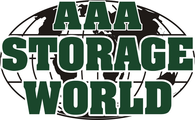BOAT STORAGE
Taking the proper precautions is very important if you want your boat to be ready to use when spring comes. Failure to winterize your boat can cause significant damage such as cracks, leaks, corrosion, and frozen pipes. Freezing, dormancy, moisture, and corrosion can lead to large repair bills. In order to avoid costly repairs in the spring, it is important to take the proper precautions in the fall.
Here are some necessary steps to take when winterizing your boat:
Find a storage location
Your options are storing in your garage, in your driveway or backyard, rack storage, a marina, or a storage facility. Be sure to consult your owner’s manual for rules on safety, instructions on towing capacity, and storage tips.
Clean
Be sure to give your boat a thorough cleaning inside and out. This will also let you discover anything that might need repair before putting your boat away until the spring. It will let you take care of any spills or messes that you may not have been aware of, and thus let you avoid having to uncover any mysterious odors in the spring. Clean your boat and apply a rust inhibitor on your steering and control cables and on the metal hardware.
CHECK OUT OUR FACILITY NEAR YOU TODAY!
Repair damages
It is best to handle anything that is broken, worn, or damaged in the fall when boatyards are less busy than in the springtime rush. You also don’t want to leave something like a crack sitting all winter long, as damage could become worse.
Remove electronics
All electronics should be removed and stored in a safe, dry, and warm place.
Prevent mildew
Things such as cushions, curtains, sails, personal flotation devices, and fire extinguishers should also be stored. Lockers and drawers should be propped open to air out, and the refrigerator should be emptied out. To avoid mildew, keep the moisture inside your boat in suspension and on the move. A dehumidifier can help increase the interior air temperature and prevent moisture, as it keeps the air circulating inside the boat. Be sure to place some boxes of baking soda throughout your boat to absorb moisture.
Drain
Drain the fluid from your manifolds and engine blocks, water pumps, and coolers. Be sure to drain and fill the gearcase with gearcase lubricants. Drain the port-a-potty, fresh water tank, and hot water heater. Add non-toxic antifreeze to your water tank, hot water heater, and port-a-potty.
Fuel and antifreeze
Fill the gas tank to prevent condensation, oxidation, and gas spoilage. Be sure to add stabilizer to preserve the gas and prevent damage to the fuel system. Run the engine for about 15 minutes to make sure the stabilizer reaches the gas in your fuel lines. Put antifreeze into the cooling system and into the supply lines for the water faucets and shower.
Monitor oil
Run the engine to warm it up and change the oil while it is warm. Dirty engine oil can thicken after long-term storage and make it difficult to start the boat when you are done storing it. Be sure to change the oil filter, too.
Prepare the engine
You’ll also want to change the transmission fluid, remove spark plugs, and use “fogging oil” on each cylinder. Spray a towel with fogging oil or WD-40 and wipe down the engine.
Paint
Sand the bottom of the boat and repaint it to prevent rust.
Prepare the battery
Disconnect the battery cables and remove the battery. Clean the terminal ends, wash the battery with a solution of water and baking soda, and rinse it with distilled water. Apply a light coating of grease to the terminal ends of the battery and cables. Be sure to use a trickle charger to keep the battery charged. Store it in a dry, safe place and off of concrete.
Inspect the stern drive
Thoroughly inspect the stern drive and remove any plants or barnacles from the lower unit. For stern drives with rubber boots, be sure to check for cracks or holes. Make sure you grease all fittings and check your fluid levels.
Clean bilges
Bilges should be clean and dry. Use soap, hot water, and a stiff brush to clean up any spills from oil. Once the bilges are clean, spray them with a moisture-displacing lubricant and add antifreeze to prevent water from freezing.
Choose a proper cover
Be sure to cover your boat tightly before storing it, even if it is being stored indoors. Make sure that whatever cover you choose has good ventilation. Also be certain there are no tears or damages to the cover.
Most insurance policies don’t cover damage caused by lack of maintenance, so winterizing is very important. The best way to winterize your boat is to check your owner’s manual; every boat is different. Don’t be afraid to seek professional help and ask lots of questions if you have never winterized before. It’s better to be safe than sorry.

